How to install an Asko washing machine?
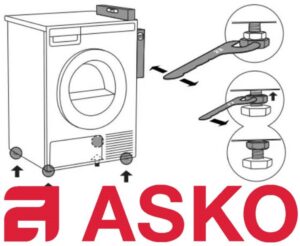 It is not enough to choose a washing machine, buy it and wait for delivery; it is also important to properly prepare the equipment for long-term use. That is why the installation of an Asko washing machine must follow all the rules, starting with the preparation of communications and ending with the idle operating cycle. At the same time, any housewife can cope with the preparation, because there is nothing complicated in this process. It is enough to carefully study the manufacturer’s instructions, and also carefully follow each point of our guide.
It is not enough to choose a washing machine, buy it and wait for delivery; it is also important to properly prepare the equipment for long-term use. That is why the installation of an Asko washing machine must follow all the rules, starting with the preparation of communications and ending with the idle operating cycle. At the same time, any housewife can cope with the preparation, because there is nothing complicated in this process. It is enough to carefully study the manufacturer’s instructions, and also carefully follow each point of our guide.
Preliminary actions
Connecting a brand new “home assistant” takes a lot of time, but this is not a reason to call service center specialists, since each installation point is easy to handle with your own hands. It is important to perform actions in strict sequence.
- Please read the official user manual first.
- Remove the original packaging and protective stickers.
- Let the appliance sit for a few hours until it reaches room temperature.
- Select the optimal location for mounting the CM.
- Remove all shipping bolts.
- Connect the machine to the sewer, water supply and electrical network.
You need to study each section of the instructions, paying special attention to the connection information. The manufacturer's handbook lists in detail installation features, such as choosing a location, methods of connecting to communications, various subtleties, etc. It is especially convenient that the manual always contains detailed illustrations that will help a beginner understand the structure of the Asko washing machine.
After reading, you need to carefully remove the device from the original packaging.Pay attention to all auxiliary elements and remove protective stickers, tape, foam, etc. that protected the equipment during transportation. You should also empty the drum in which the components are usually placed.
Then you need to leave the unit for several hours to “get used” to room temperature. This point is especially important in winter, because it affects the safety of household appliances. 2-3 hours is enough for rubber parts to regain their elasticity and firmness.
The fourth point is the selection of the installation location for the washing machine. It is best to choose a place before purchasing the machine, so that the future “home assistant” fits into the overall style of the house and the interior of a particular room. This is also very important because of the dimensions that need to be taken into account, especially in the case of purchasing a built-in washing machine. Additionally, it is necessary to take into account that all communications are nearby, since you should not use an extension cord, over-tighten the power cord or lengthen the drain hose - this is unsafe. Finally, the location should be selected based on the flooring, which should be durable and level. For example, it could be tile or concrete.
If you do not have another place for the machine, you will have to install it on a laminate or wooden floor covering, then be sure to strengthen the floors and protect them from leaks.
Finally, it's time to remove the shipping bolts mounted on the rear of the equipment for safe transportation. It is these elements that hold the tank of the machine in a fixed position, in which the internal components will not be damaged during transportation. 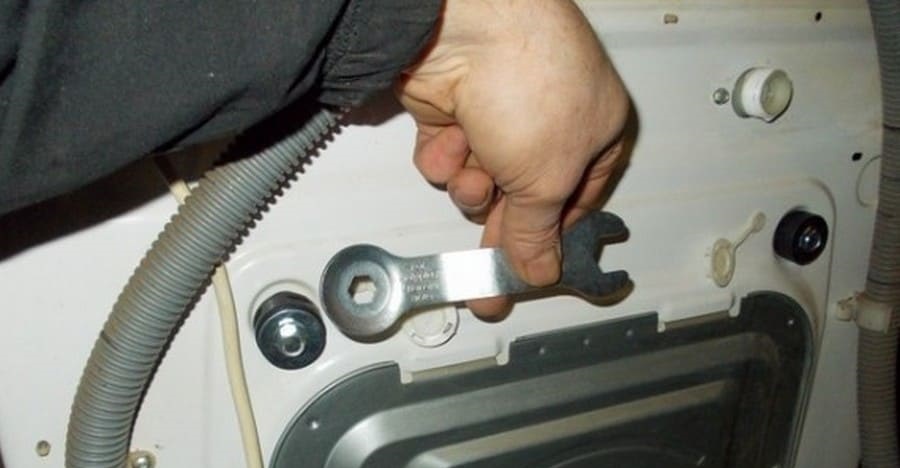
However, starting the working cycle in this state is strictly prohibited, since there is a risk of damage to the internal elements of the machine. If this happens, you will have to pay for the repair yourself, since such a launch of the SM will void the warranty. That is why it is important to remember about the latches and, before the first start, remove them using a key, and then close the holes with plastic plugs that come with any washing machine.
How are we going to install the machine?
Self-installation of an Asko washing machine can be done in several completely different ways that are suitable for any room. Each of them has its own characteristics that must be taken into account.
- Separate installation. Laundry equipment can be located separately from other equipment. This is the simplest type of placement, because you just need to adjust the height of the machine according to the building level so that it stands level, and also its height corresponds to the height of the countertop if you decide to install the machine in the kitchen.
- Column. When the user has a dryer, he can place it on top of the washer if the dimensions of the devices are appropriate. In this case, the dryer is placed on top using suction feet or a special fastener from the Asko brand, if both “home assistants” were manufactured by this company.
- Side by side. A method for placing a washer and dryer next to each other.

- Under the countertop. If the countertop in the room reaches a height of 90-95 centimeters, then the device can be placed under it.
In this installation option, it is necessary to ensure that there is a free space of approximately 5 centimeters around the unit.
- Into the cupboard. Finally, to maintain a unified style in the interior, you can hide household appliances in a closet.For this option, air gaps of at least 2.5 centimeters should be provided from the edges of the CM to the cabinet walls. In this case, furniture doors must have ventilation holes, plus they should not interfere with opening the hatch door of the machine.
Due to such an abundance of installation options, any user will be able to find a place for a new “home assistant”, even if there is not much free space in the house.
Set the required language and other options
Modern Asko technology implements innovative programs and functions, so it can and should be customized in advance. First of all, this concerns the menu language.
- Activate the washer and enter the main menu.
- Go to the "Language" section.
- Select the language you need.
- Click OK.

You should also adjust the consumption of household chemicals during operating cycles, for which you need to know accurate data on the hardness of tap water in your region. This information can be found on the official website of the local resource supply organization, or through simple self-checks using test strips or other devices. Next, you should study the packaging of your detergent, which will indicate the consumption depending on the hardness of the water. Afterwards, all that remains is to set the consumption of detergents in the corresponding section of the main menu.
Place the SM body level and adjust the height
The next point in preparing the equipment is placing the washing machine on a flat, hard surface. Under no circumstances should you install the appliance without a spirit level, as the slightest misalignment will cause excessive vibration and imbalance, which can damage sensitive household appliances.
Evenly installed equipment not only vibrates less during washing and spinning, but also makes less noise.
To adjust, you will need not only an ordinary building level, but also wrenches 32 and 17. The first is needed to adjust the SM legs, and the second will help to tighten the lock nuts all the way towards the bottom of the washing machine.
Provide power to the machine
We move on to connecting communications, which must be prepared in advance. It is best to place the “home assistant” near a suitable outlet. It should be no further than 1.5 meters from the device, as this is the standard length of the power cord. In addition, it must be a separate moisture-resistant point with suitable voltage. In this case, it is strictly prohibited to use an extension cord, as this is dangerous for energy-consuming household appliances.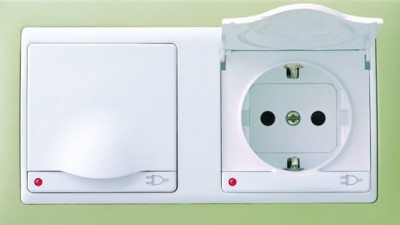
It is also worth considering that the outlet must be grounded, because this will protect the owner of the machine from electric shocks and possible fire. Otherwise, there will be a very high risk of fire, which must not be allowed.
Connecting equipment to water
Now we move on to the water supply, with the help of which the machine will wash dirty things. Most often, the SM inlet hose is connected to a pipe with cold water, since the machine itself perfectly heats tap water using a heating element. However, a number of Asko models can be connected to a hot water pipe, but it is better not to do this. It is worth excluding constant contact of equipment with boiling water, because it is unsafe, plus, it is not always necessary for the operating cycle.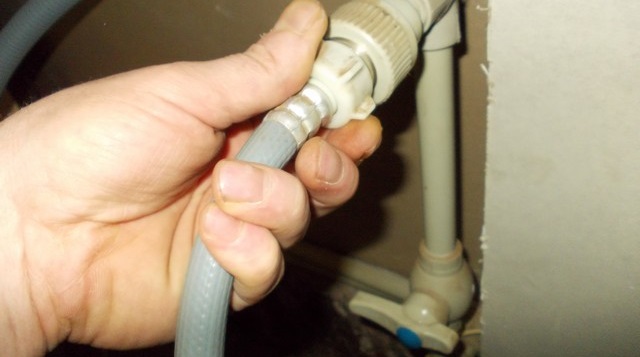
Connecting to the water supply will take a few minutes, especially in a situation where this is not the first automatic washing machine in the house.In this case, you just need to connect the filling hose of the device to the finished outlet point, open the shut-off valve and make sure that nothing is leaking at the junction. If the exit has not yet been organized, then you should either prepare it yourself by installing a tee tap into the pipe, or call a specialist. In any case, when working with communications, you should consider the following rules:
- water pressure should not be less than 0.1 MPa;
- if you have new pipes in your house, drain the water in advance, which will prevent contamination of the filters, which could cut off the water supply;
- use only special inlet hoses that come with the equipment;
- Provide an adapter for connections with mismatched sizes.
The most difficult thing in working with plumbing is organizing a point for the washing machine, so if you already have it ready, then all further preparations will take less than 5 minutes.
We install a hose that discharges dirty water
The last point of our guide is devoted to organizing the drainage of waste liquid. The fastest and easiest method is to lower the end of the drain hose directly into the bathtub or toilet. This is really convenient, but completely unhygienic, and simply ugly. In this case, the hose will have to be constantly removed before each work cycle, and then removed again. In addition, dirty water, hair, fur and other debris will remain on the snow-white plumbing.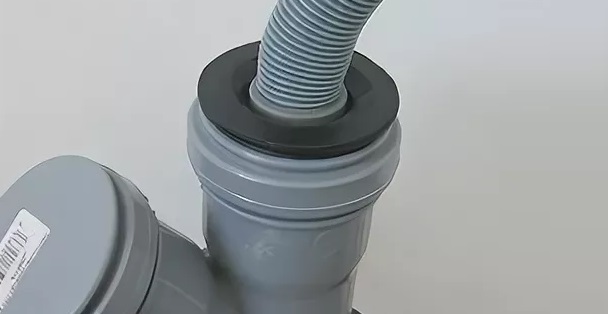
That is why it is best to organize drainage using a sewer through a pipe or siphon. To do this, you need to carefully secure the joint with a clamp, which will prevent possible leaks. You also need to ensure the bend and the required height of the hose, observing standard connection rules.
Most often, the hose is placed at a height of 50-60 centimeters from the floor level, and then a special bend is created with a small hook. This will create a water plug, due to which unpleasant odors and dirt will not be able to enter the tank of the Asko washing machine.
Do not connect the drain hose to a drain if it is higher than 90 centimeters from the floor level or its diameter is less than 1.8 centimeters.
When the connection to the sewer is completed, all you have to do is turn on the “home assistant” and run a test idle cycle. This way you can check the correct installation and get rid of dirt and factory lubricant in the device that may have remained after assembly and storage of the CM in the warehouse.
Interesting:
Reader comments
- Share your opinion - leave a comment

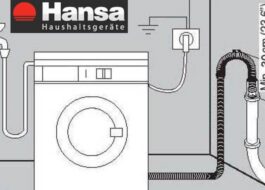
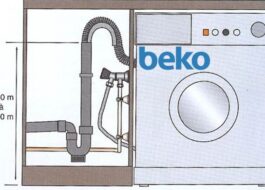

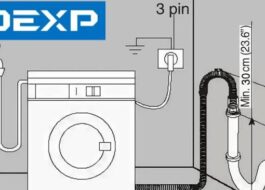
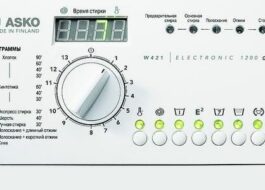
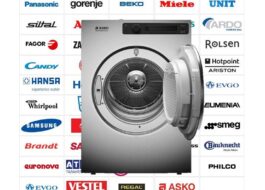














Add a comment